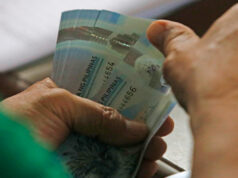No property bubble in sight for now — UA&P
By Melissa Luz T. Lopez
Senior Reporter
THE PHILIPPINES is far from seeing a property bubble amid buoyant demand for both residential and commercial space, with the influx of more foreign investors driving demand for real estate amid limited supply.
David T. Leechiu, president and chief executive officer at Leechiu Property Consultants (LPC), said demand for real property will soar across segments over the next few years driven by increased investments to the Philippines.
“Next year, you have the removal of many industries from the negative list. Everyone including the President has been talking about liberalizing many more industries that are only for Filipinos and [in which] no foreigners are supposed to participate,” Mr. Leechiu said during the Year-end Business Economics Briefing of the University of Asia & the Pacific (UA&P) yesterday.
“This means that more companies will start buying existing companies and expanding their presence in the Philippines.”
The government is moving to allow foreign contractors to take on public construction projects under a more “aggressive” Foreign Investment Negative List that is now up for approval by President Rodrigo R. Duterte, alongside opening up retail trade further, as well as professions and public utilities to foreigners.
For business process outsourcing (BPO) alone, the property consulting firm sees a need for 450,000-650,000 square meters (sq.m.) of office space next year, against the 390,000 sq.m. available.
“As we get closer to the new year, more and more space of the PEZA (Philippine Economic Zone Authority) will be taken up… There’s a lot of office space under construction. We think there’s going to be a glut in office space for the second half of 2018 that will last all the way until 2019, and it will stabilize in 2020 because all the supply will get absorbed,” Mr. Leechiu said.
“There clearly is a gap between supply and demand,” he added, noting that slow approval of ecozone sites is constraining available space for business.
Take-up of commercial space in Metro Manila is shaping up for another record at 750,000 sq.m. this year, largely due to sustained though slower BPO growth.
The entry of more Chinese and Japanese companies — amid even warmer tries under Mr. Duterte — should boost demand further.
Mr. Leechiu said Chinese online gaming firms were first to venture into the Philippines after Mr. Duterte announced in a speech in Beijing in October last year his “separation” from the United States and his realignment with China and Russia.
Mr. Leechiu said he expects banks, energy, food and others from the mainland to follow.
The LPC executive sees the share of BPO rentals shrinking with Chinese gaming operators — who now have a third of market share — taking a bigger slice of workspace leasing.
Country risks in terms of possible policy shifts and political noise could have some foreign firms “rethinking” expansion plans here, even as Mr. Leechiu noted that such headwinds have become a “way of life” here.
The emergence of flexible, “co-working” spaces are likewise pushing rental rates up, the property expert said.
On the residential front, worsening road congestion also pushes up demand for condominiums and apartments closer to workplaces among the mass market.
Robust demand coupled with limited supply has been driving the increase in property prices, quelling fears of a bubble.
“For as long as debt levels continue to be low — and it looks like it is — then unlike the boom from 1992-1997 where most of that growth is debt-fueled, this boom involves very little debt. You’re not seeing debt artificially inflating prices yet,” Mr. Leechiu said.
UA&P economist Victor A. Abola also allayed concerns over a real estate bubble and overheating of the overall economy, with actual demand driving prices higher.
“We are deviating from the threshold and we’re actually far from that… Developers are slowing from the 2012-2013 peak,” Mr. Abola said, even as he flagged an oversupply in the luxury segment for multimillion-peso properties.
To add, he said real estate developers are still unable to meet the annual requirement of about 325,000 new residential units and a three million backlog for the low-cost segment.
The economy is likewise far from overheating, with credit growth seen manageable and upbeat industrial sector driving further expansion.
Mr. Abola sees Philippine gross domestic product expanding by 6.9% this year and by 7.1% in 2018, supported by robust domestic demand and fuelled by rising investments.
Both forecasts render the government’s growth targets doable, while keeping inflation in check in the years ahead.



